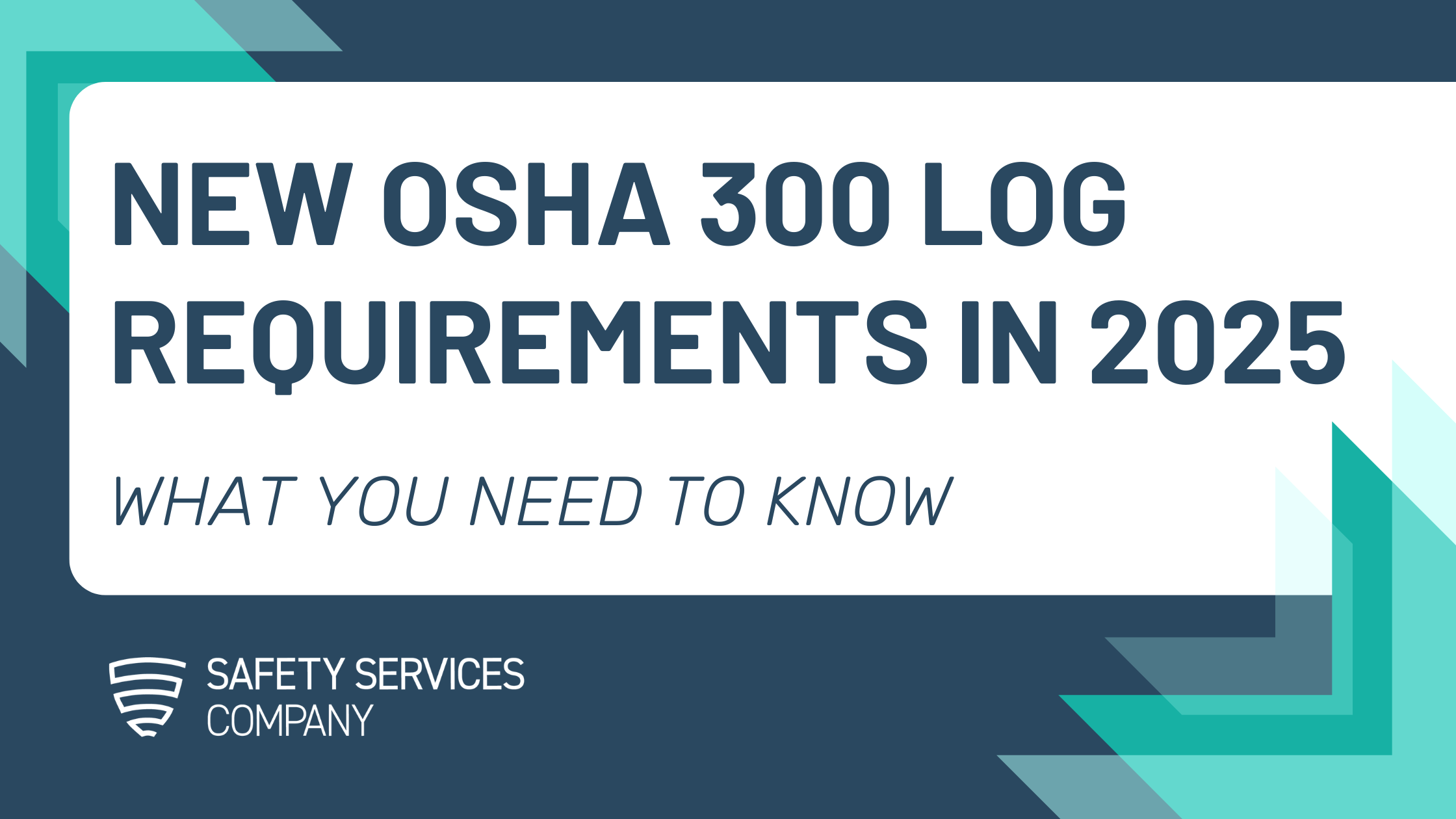New OSHA 300 Log Requirements in 2025 | What You Need to Know
January 6th 2025
Safety Services Company
- Best Practices
- Contractor Management
- Industry News
- OSHA Regulations

Are you ready for the new OSHA 300 Log requirements in 2025? If you’re a contractor or safety professional, these changes are more than just another “to-do” on your compliance list—they bring important updates for recording and submitting workplace injuries and illnesses.
Here’s the good news, though: staying compliant doesn’t have to be complicated (especially if you have the right help).
We’ve broken everything down for you—what’s changing, who’s impacted, and how you can stay on top of things with confidence.
Who Needs to Pay Attention to OSHA 300 Log Requirements?
The updated OSHA 300 Log requirements target high-hazard industries (think Construction, Oil and Gas, Manufacturing, Healthcare). If you have 100 or more employees, these changes are headed your way.
Not all industries are in the mix, though. Low-hazard industries like retail, real estate, and finance may get a pass. To be sure, check out OSHA’s list of covered industries—it’s always best to confirm rather than guess.
If your business qualifies, here’s the kicker: you’ll need to electronically submit detailed injury and illness reports from your OSHA 300 Log and OSHA 301 Forms every year.
What Info Should Be on Your OSHA 300 Log?
Now’s not the time to skimp on details. The updated OSHA 300 Log requirements will have you reporting specifics for each recordable incident. Here’s what you’ll need to include:
- When and where it happened.
- Employee details, like their role and some basic demographic info.
- What happened and how, including any contributing factors or equipment involved.
- Your company’s legal name (yep, no abbreviations here).
Sound like a lot? It kind of is—and that’s by design. The goal is to boost transparency and help everyone–from OSHA to the public–get a better view of workplace safety trends.
If you’d rather not stress about getting it 100% right, remember we’re here to help. Our team makes sure your records are accurate and ready to submit.
Mark Your Calendar—When’s the OSHA Log Submission Deadline?
The new OSHA 300 Log requirements come with a firm deadline every year—March 2nd of the following year, to be exact. That means your 2024 records need to be submitted by March 2, 2025. Missing the date? Not an option (unless you want to risk penalties, and who wants to do that?).
Also, don’t forget to hold onto those forms! You’re required to keep OSHA 300 Logs, OSHA 301 Forms, and Annual Summaries on file for five years. Treat them like tax records—better safe than sorry.

Submitting Your OSHA 300 Log
Got your records ready? Here’s how to get them to OSHA using their Injury Tracking Application (ITA):
- Manual Data Entry – Plug the info into OSHA’s online webform.
- CSV File Upload – If you’re all about spreadsheets, upload your data as a CSV file.
- API Integration – For big companies with fancy systems, automate your submissions with API tools.
Whichever route you choose, make sure everything’s formatted to OSHA’s specs. Nothing’s more frustrating than having a submission rejected for something as minor as a formatting slip-up.
Need a hand? That’s why we’re here. From walking you through the process to handling the nitty-gritty details, we’ll make sure your submissions are reported accurately.
Tips to Nail Compliance Like a Pro
Think managing these requirements is a lot to handle? We’ve got your back with these tips to make it easier (not to mention less stressful):
1. Stay on Top of Recordkeeping
Track incidents in real-time. Procrastinating until January or February to pull data together is a recipe for stress.
2. Educate Your Team
Make sure supervisors and managers know what’s required. Accurate reporting starts with clear communication.

3. Double-Check Your Records
Conduct audits throughout the year. Spotting and fixing errors early saves you from scrambling later.
4. Use Smart Tools
Don’t underestimate the power of technology. Recordkeeping software can simplify tracking and reporting—saving you time and headaches.
5. Ask for Help
Compliance isn’t a solo mission. Partner with experts (hey, that’s us!) to make sure everything’s done right.
Your Next Move – Working with Experts Like Us
Meeting the updated OSHA 300 Log requirements may feel like one more thing to juggle, but it’s far from impossible—especially with a little backup. At Safety Services Company, we’ve spent over 20 years streamlining compliance for companies like yours.
Whether it’s guiding you through electronic submissions or helping you build a system to keep things organized year-round, we’re in your corner.
Start the Year Stress-Free
Don’t wait—schedule your consultation today! We’ll show you how to simplify compliance, protect your team, and ensure your business is ready to tackle the year without breaking a sweat.
Need more customized solutions? Our experts can help you create a plan tailored to your unique needs. Give us a shout, and we’ll handle the rest.
Disclaimer: This content is for informational purposes only and may not reflect current regulations, best practices, or legal requirements. While accuracy was intended when published, some laws and standards may have changed. Do not rely on it as legal or professional advice.
For guidance specific to your situation, consult a legal professional or refer to the latest regulations. If you have questions or need assistance with additional compliance matters, our team is here to help.